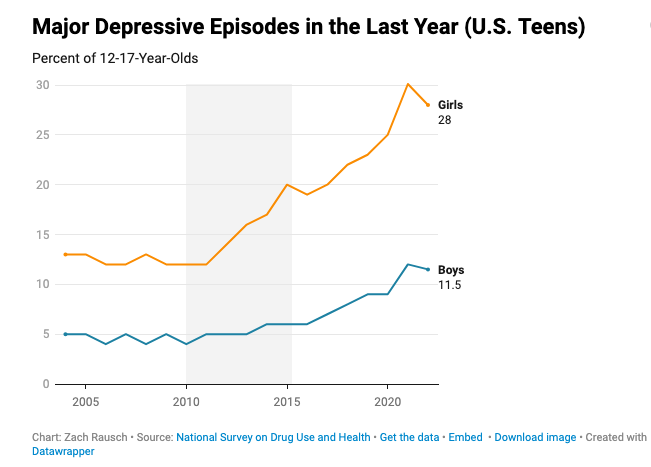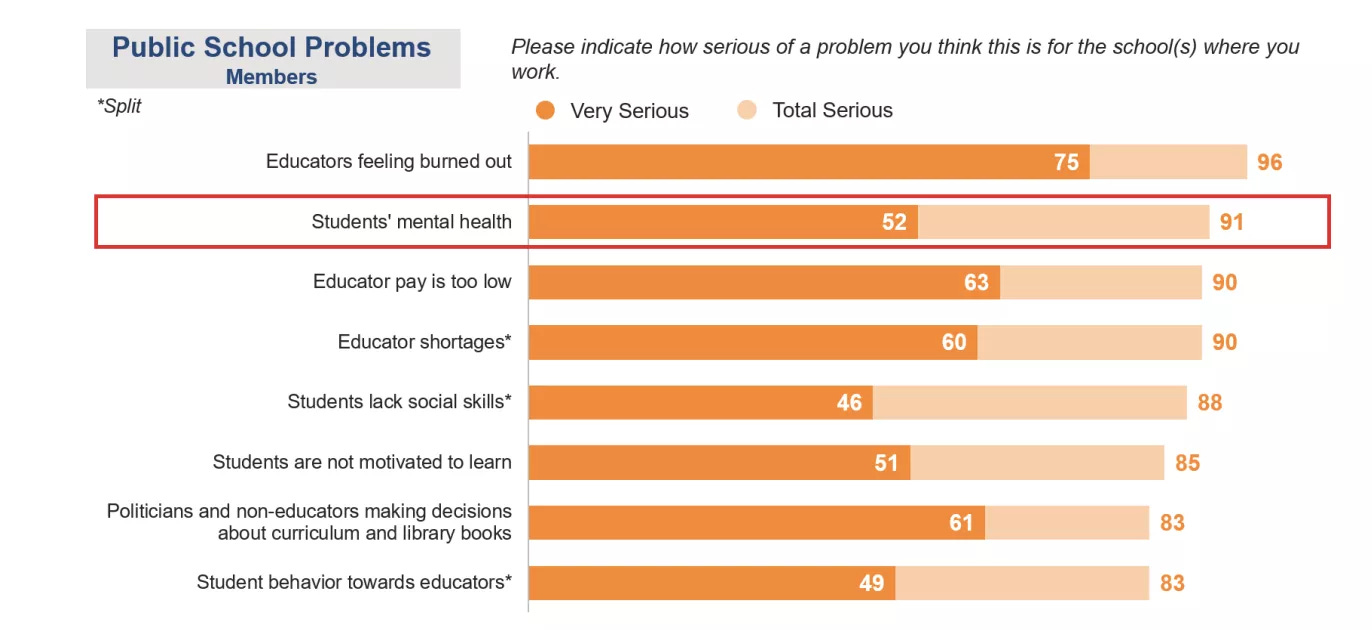Let's Upgrade Our School Cellphone Policies
Cellphones in schools harm student mental health and academic outcomes. Why don't we have more effective policies to address this issue?

A strong cellphone policy is a cheap, effective way for schools to address the burgeoning mental health crisis among our youth. No need for new equipment, more school counselors, or providing medical or mental health care. Instead, a simple policy change could be the key to enhancing student mental health and academic achievement
Last week, my fifth grade son requested an iPhone 15 or 16 so that he could participate in the “groupchat” with “everyone” in his Newport-Mesa elementary school class. In addition to alleviating his FOMO (Fear of Missing Out) on the groupchat, he wanted a phone so that he can take pictures of the homework assignment at the end of every day like the rest of his friends instead of writing it down. Per my son, “everyone” has a phone. Practically speaking, with how many water bottles and lunch boxes he has lost this year alone, the thought of sending him to school with a new iPhone is a nonstarter for us. But, more importantly, we will keep a smartphone out of his hands to protect him from the well-documented, anxiety-inducing and distracting effects such devices have on our kids.
Although states like New York have passed comprehensive legislation to create phone-free school environments, California has left this responsibility to individual districts. If my son’s case is any indication, Newport-Mesa, at least, can do better.
Smartphones and Related Devices Harm Our Students’ Mental Health and Learning
At this point, there is widespread consensus surrounding the harms that smartphones, social media, and related devices inflict on our kids. For an in depth review, I would recommend Jonathan Haidt’s excellent The Anxious Generation and his related Substack, After Babel.
The adolescent-Gen Z mental health crisis
In short, researchers have noticed a massive spike in anxiety, depression, and related disorders among Gen-Z and younger kids starting in 2010. This chart showing a surge in depressive episodes among 12-17 year olds is emblematic:
Although there is lingering disagreement, Haidt and others have very convincingly attributed the adolescent-Gen Z mental health crisis to phones, screens, and social media rapidly replacing our kids’ real-world life experiences.
Smartphones’ effect on student learning
Aside from harming our kids’ mental health, smartphones, social media, and related devices hurt their ability to perform in school. Educators say that devices distract students and disrupt their classrooms. Social media and groupchats lead to cyberbullying, underdeveloped social skills, and FOMO-related anxiety. Students cannot concentrate, lack motivation, and act out. Overall, educators say that student mental health is an even greater concern than their own pay!
How Should Our Schools Protect Our Kids?
Researchers suggest a model cellphone policy should contain these five key features:
Feature 1. Require all schools in the state to comply.
Feature 2. Physically separate students from all personal devices.
Feature 3. Give students the full 6-7 hours of the school day to focus on their teachers and their fellow students.
Feature 4. Stop schools from requiring smartphones and social media use.
Feature 5. Include exceptions for special education and medical needs.
Although California passed legislation on this subject to much fanfare last year, the law is toothless. The law merely directs school districts to create their own policies by 2026 . . . without spelling out any relevant details. (Educ. Code, sec. 48901.7.) Instead, communities have been left to create their own policies. In California, the best we can do is four out of five.
In contrast, New York’s policy reportedly satisfies the key features. The policy is statewide, will sequester the devices, and last from “bell-to-bell.” Schools are to provide storage devices for students to lodge their phones while they’re at school.
Newport-Mesa’s Policy Falls Short of Best Practices
Newport-Mesa’s Board Policy 5131.8 contains none of the five features. For high schoolers—the group most at risk from the harmful effects of devices—the policy provides that students may use their devices throughout the day:
Students in grades 9-12 may use cell phones, smartphones, smart watches, or other mobile communication devices on campus during non-instructional time and as directed by school personnel or to support instruction, as long as the device is utilized in accordance with law and in accordance with BP/E 6163.4 Student Use of Technology.
The policy permits the most vulnerable population to be on their devices during noninstructional time at school. Per this policy, students are free to check social media/groupchats on campus in between classes. Although devices must be turned off during instructional time, distracting notifications pile up to check on the moment the next bell rings. They can use their phones freely during recesses and lunch instead of hanging out together. They can make Tiktok videos, cyberbully, and hang out on FOMO-inducing groupchats. Further, there is no prohibition on schools requiring smartphones and social media for official communications. Lastly, the exceptions to the policy are so broad as to nearly swallow the rule, such as when a teacher may permit student use.
Newport-Mesa’s K-8 cellphone policy is stronger but could use improvement:
Students in elementary [or middle/intermediate] school may not use cell phones, smartphones, smart watches or other mobile communication devices during the instructional day. Devices must be turned off and placed out of sight during the school day.
Even here, students are not separated from their devices. Cellphones still seem to come out, at least in my son’s class. Moreover, groupchats and youtube videos are still a discussion point. To hit the gold standard, Newport-Mesa should require K-8 graders to lodge their phones from bell-to-bell.
Although Newport-Mesa’s policy prohibits use of cellphones for K-8 throughout the instructional day, the policy leaves vulnerable adolescents at their devices’ mercy. To be consistent with best practices, Newport-Mesa should physically separate phones and devices from all students, K-12, for the entire day. If New York can get it done, so can we.
Conclusion
According to high quality research, a quick, effective, and cheap way to improve student mental health and academic achievement is upgrading our cellphone policies consistent with the five features outlined above. The research shows our children learn more, feel better, and build real friendships when they are unplugged. To allow all our students to unplug and be present, our districts should move all our campuses — grades K through 12 — to device free environments.
What do you think? Who is doing it right in California? What are the policies in your district?



